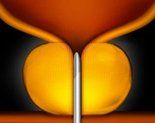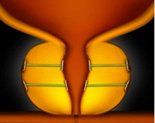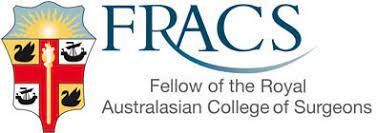BPH Treatments
Treatments for Enlarged Prostate
Enlarged prostate or Benign Prostatic Hyperplasia (BPH) is a common condition in men as they age. The treatment options for BPH include medications, minimally invasive procedures, surgery, active surveillance, and Greenlight laser therapy.
Dr Wang can offer advice and a range of surgical treatments for BPH, including
- UroLift for BPH,
- REZUM for BPH,
- Laser Therapy for BPH,
- Transurethral Prostate Resection (TURP), and
- Simple Prostatectomy (Open or Robotic).
Active Surveillance & Medications for BPH
Active Surveillance is a treatment option for men with BPH who have small prostate glands and mild symptoms. It involves regularly monitoring the patient's condition without immediately starting treatment.
This approach is often recommended for older men or men with other health problems who may not be suitable for more aggressive treatments. During active surveillance, a patient is monitored regularly with a PSA blood test, Digital Rectal Examination (DRE) and symptoms review.
Medications are also a standard treatment option for BPH. Alpha-blockers, such as tamsulosin (Flomaxtra) and silodosin (Urorec), relax the prostate and bladder neck muscles, making urination easier. 5-alpha-reductase inhibitors, such as finasteride (Proscar) and dutasteride (Avodart), reduce the size of the prostate by blocking the production of a hormone that stimulates prostate growth.
UroLift for BPH
What is Urolift?
The Urolift procedure effectively treats Enlarged Prostate or BPH. Tiny implants are applied to lift and hold the enlarged prostate tissue out of the way, so it effectively holds the urethra open.
UroLift offers fast relief of symptoms and significantly improved quality of life.
What are the Advantages of the UroLift Procedure?
The key advantages of the UroLift procedure in treating BPH are
- Quick recovery
- Preserves ejaculation
- UroLift does not cause sexual side effects such as erectile dysfunction, or incontinence, as it does not remove or destroy prostate tissue.
- The UroLift procedure preserves sexual function by not damaging the nerves responsible for erections.
- Long-term effectiveness
- No catheter needed
- Cost-effective
Who Can Benefit From Urolift?
Good candidates include:
- Have symptoms relating to BPH and
- Who are not allergic to nickel, titanium or stainless steel.
UroLift Treatment for Benign Prostatic Hyperplasia
The UroLift approach to treating BPH simply lifts and holds the enlarged prostate tissue so it no longer blocks the urethra.
The procedure is minimally invasive and is typically performed under general anaesthesia in day surgery.
Pre UroLift Assessment
To prepare for the surgery, the patient should be adequately counselled to ensure that the informed consent obtained is fully understood.
Dr Wang will
- Take your medical history to assess your symptoms and suitability
- Perform a physical examination (may include Digital Rectal Exam (DRE)),
- Perform some preoperative tests.
Preoperative Tests may include
- IPSS (International Prostate Symptom Score)
- PSA test
- Renal Tract Ultrasound
- Uroflowmetry study, and
- Urinalysis.
Before surgery, flexible cystoscopy may also be performed to assess the configuration of prostate enlargement and suitability for Urolift and exclude other pathology (i.e. bladder tumour).
During UroLift Procedure
The actual UroLift procedure usually takes 30 minutes. This is generally performed under general anaesthesia.
Medication to feel more comfortable may also be used to help manage the procedure.
Recovery After UroLift Procedure
As with any medical procedure, individual results may vary. Typically, no catheter and no overnight stay are required post-treatment. Patients typically go home the same day.
There is minimal downtime after the Urolift procedure, and many patients experience symptom relief as early as two weeks.
Patients may experience some urinary discomfort during the recovery period.
Risks and Side Effects After a UroLift Procedure
The most common side effects can include
- blood in the urine,
- some pain or discomfort when urinating,
- some increased urge to go, and
- discomfort in the pelvis.
While not usual, these post-operative issues or side effects typically resolve within two to four weeks after the procedure.
REZUM for BPH
What is Rezum Therapy?
Rezum therapy is a new minimally invasive transurethral method of treatment for BPH.
How Does Rezum Therapy Work?
Rezum therapy uses thermal energy produced by water vapour to treat the hyperplastic prostate tissue, which is responsible for BPH symptoms.
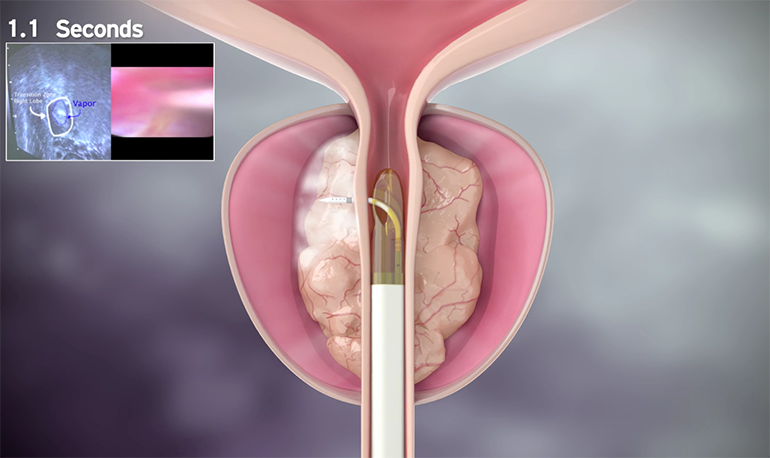
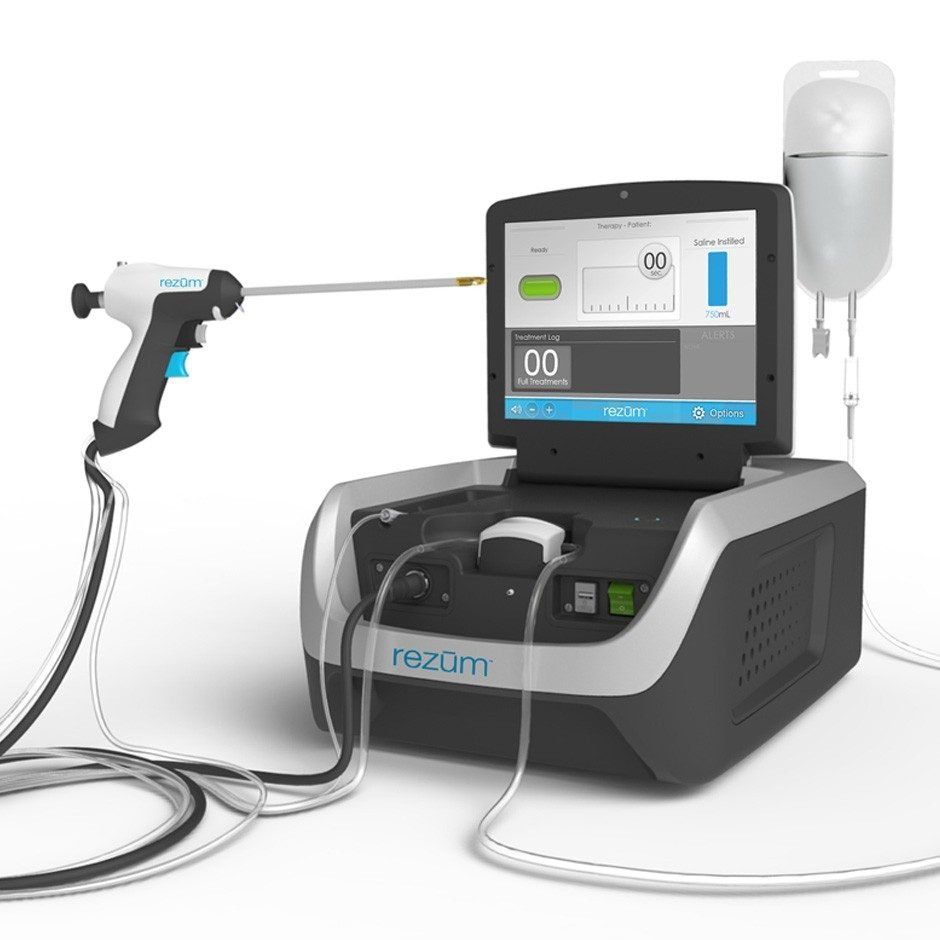
Benefits of Rezum Therapy
Rezum therapy as a procedure in some cases is preferable over other BPH treatments as it offers the following benefits:
- Minimal sexual dysfunction (i.e. Preserves ejaculation)
- Minimally invasive
- Cost-effective
- Quick recovery
- Long-term effectiveness
Preparation Before Rezum Therapy
To prepare for the surgery, the patient should be adequately counselled to ensure that the informed consent obtained is fully understood.
The doctor then runs several tests to ensure that the patient is fit and in good health for the surgery. These will include
- IPSS score,
- Pathology tests,
- Urine analysis,
- PSA test,
- Uroflowmetry test +/- urodynamics
- Renal tract Ultrasound scans.
Before surgery, flexible cystoscopy may also be performed to assess prostate enlargement and exclude other pathology (i.e. bladder tumour).
Steps in Rezum Therapy
In preparation for the surgery, an IV line is inserted in his arm. The anaesthesia administered will be general or spinal, which is decided by the anaesthetist and surgeon on a case-by-case basis.
The surgical device required for this operation is a transurethral delivery and a radiofrequency (RF) generator. This transurethral wand also incorporates a standard cystoscopy lens and a retractable vapour needle that delivers the water vapour.
Rezum surgery treats the additional prostate gland tissue by ‘convective water vapour energy (WAVE)®’.
The surgery includes the following steps:
- The patient is positioned on his back and is administered anaesthesia. Although it can be performed under sedation, it is typically performed under general anaesthesia in Australia.
- The legs of the patient are placed in stirrups and elevated and spread apart (lithotomy position)
- The transurethral device is inserted, and the convective water vapour energy (WAVE) is applied to produce water vapour, which is delivered to the treatment site via the retractable vapour needle.
- Each area is treated in 9-second bursts, and the water vapour on contact with prostate tissues causes immediate cell necrosis.
- Once the procedure is completed, a soft catheter is placed into the patient's bladder. This helps in urination.
- The patient is then placed in post-operative care
Recovery After Rezum Therapy.
The patient is kept in the recovery room for observation, and their vitals are monitored.
Pain medication is administered as needed via IV lines if required. In a few hours, the patient is discharged home.
The catheter is needed and is generally kept in place for 3-7 days after surgery. This ensures that urine can pass without problems. The longer catheter duration and higher risk of infection compared to other surgical procedures are one of the main downsides of REZUM. As the recovery progresses, the catheter is removed.
Patients can return to their daily activities within a few days of the procedure. Pain medication can also be taken on an as-per-need basis.
Post-Rezum Therapy Care Plan
A care plan will be devised for the patient for the next few months to aid in recovery and to help improve bladder control.
Dr Wang and his team will also advise a follow-up visit chart to check the patient's progress in the clinic and for any post-surgical complications.
Laser Therapy for BPH
What is Laser Therapy for BPH?
Laser therapy for BPH is a treatment module for enlarged prostate glands that uses light energy and heat to destroy prostatic tissue.
Types of Laser Therapy for BPH
There are many different types of laser therapy for BPH. The most common ones are
- Green Light Laser Prostatectomy,
- Holmium laser enucleation of the prostate (HoLEP), and
- Thulium laser enucleation of the prostate (ThuLEP).
Laser Therapy Benefits
Laser therapy is reported to give the same relief, benefits and outcome as compared to the more traditional TURP while having lesser side effects after the procedure, such as fewer chances of bleeding.
It is, therefore, mainly indicated for men unable to withhold blood thinning agents before and after surgery due to other medical conditions. It may also reduce catheter duration and hospital stay. Ongoing studies are being conducted to evaluate various types of laser therapy for enlarged prostate in terms of short and long-term outcomes.
Preparation Before Laser Therapy for Prostate Gland
To prepare for the procedure, the patient should be adequately counselled to ensure that the informed consent obtained is fully understood.
Dr Wang then runs several tests to ensure that the patient is fit and in good health for the surgery. These will include
- IPSS score
- A thorough physical exam
- Pathology tests
- Urine analysis
- PSA test
- Uroflowmetry test/-Urodynamics
- Scans (i.e. ultrasound)
Steps in Laser Therapy for Prostate Gland
The laser surgery includes the following steps:
- The patient is positioned on his back on a table.
- Anaesthesia (general or spinal) is administered per the anaesthetist's and urologist's decision.
- A device known as the cystoscope is inserted into the urethra to reach the prostate gland.
- A separate thin fibre is run through the cystoscope, which emits radiating light pulses, producing heat to destroy the enlarged gland.
- Once completed, the cystoscope is removed, and a catheter is placed to help drain urine from the bladder.
The procedure usually lasts an hour.
Recovery After Laser Therapy for Prostate Gland
The patient is placed in the recovery room and his vitals are monitored, followed by his release after a few hours.
The catheter remains for one or two days after the procedure to aid urination.
Patients can return to their routine within three days after the surgery. Driving, heavy lifting and other strenuous activities are prohibited until Dr Wang and his team sign off on them, as they may result in bleeding.
Pain medication can also be taken as per need to manage post-operative pain. Given the nature of the surgery, the patient is expected to experience diminished volume or retrograde ejaculation. Sexual intercourse is best avoided for the few weeks after surgery to allow healing.
Care Plan for Laser Therapy for Prostate Gland
Dr Wang will devise a care plan for the patient for the next few months to aid in recovery and to help improve bladder control.
He will also advise a follow-up visit chart to check the patient’s progress in the clinic and for any post-surgical complications.
Transurethral Prostate Resection (TURP)
What is TURP Surgery?
Transurethral Resection of the Prostate gland, commonly referred to as TURP, is carried out primarily to relieve the obstruction caused by an enlarged prostate.
Although it can improve waterworks symptoms, it is not the type of operation usually carried out to treat prostate cancer.
Why is TURP Surgery Performed?
TURP surgery is performed to remove the excess prostate tissue that is blocking the urethra. This allows for improved urine flow and relief of symptoms. The procedure is considered the gold standard treatment for BPH and effectively improves urinary symptoms. It is usually offered when the symptoms are severe and are not manageable by medication or minimally invasive procedure.
TURP typically relieves symptoms quickly. Most men experience a significantly stronger urine flow within a few days.
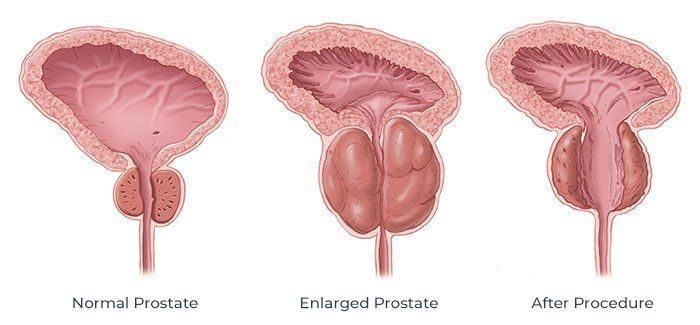
Transurethral Resection Prostate Surgery
The duration of the TURP procedure varies based on many factors (i.e. the size of the prostate) but typically takes between 45 and 60 minutes. The operation is performed by:
- Passing a telescopic instrument in through the eye of the penis and up the urethra into the area of the prostate. Dr Wang will not need to make any cuts (incisions) on the outside of your body,
- A special electrical loop is used to trim tissues that are causing enlarged prostate and its related bothersome symptoms, and these pieces can then be flushed out,
- The internal lining of the bladder is routinely inspected to ensure no injury to ureteric orifices and other landmarks and retrieval of all the tissues.
- Dr Wang will check for haemostasis (to double-check the bloodless field) at the end of the procedure.
The catheter (a plastic tube that drains urine from the bladder) is used and usually kept in place for anything between one to two days after the surgery.
Whilst the catheter is in place, irrigating fluid can be instilled simultaneously as the urine drains into a bag. Nurses change the irrigating fluid and bag at regular intervals.
Typically, you will be given a general anaesthetic, but it can be performed under spinal anaesthetics. This involves the placement of a needle into your lower back, and after the injection of anaesthetic drugs, you will be completely numb from the waist down. Your anaesthetist will discuss this further with you.
The usual length of stay in the hospital is two days.
Risks of Surgery
TURP has a very high success rate associated with TURP. However, any surgery involves risks that need to be considered. While uncommon, the risks with TURP surgery can include:
- Significant bleeding - requiring a blood transfusion (1%),
- Infection in the urine - although this risk is minimised by the routine administration of antibiotics
- Incontinence - rare (less than 0.5%) and can be treatable
- Impotence - very uncommon, there are many treatments available.
- Retrograde Ejaculation - is very common and involves the absence of any fluid during a sexual orgasm.
Recovery after TURP Surgery
Recovery after TURP surgery varies for each patient. After the procedure, patients will typically spend two nights in the hospital for observation. It's important to note that for the first few days after TURP, patients may experience some discomfort, and the urine may appear pink or red due to the presence of blood. This is normal and should resolve within a week.
Patients will be given instructions on how to care for themselves at home and advised to avoid strenuous activities for some time, usually 2 to 4 weeks. They should also avoid driving for a week or two after the procedure. It's also important to drink plenty of water to help flush out the remaining debris from the surgery.
Some patients may experience retrograde ejaculation (dry orgasm) after TURP, which can be permanent. Some patients may also have incontinence, which typically improves with time.
Follow the post-operative instructions provided by Dr Wang and contact him if there are any concerns. Recovery time for TURP varies, but it can take several weeks for the patient to return to normal activities.
Simple Prostatectomy (Open/Robotic)
Simple Prostatectomy, also known as Open Prostatectomy, is a surgical procedure used to treat BPH symptoms. The procedure is performed under general anaesthesia, and it involves the removal of prostate tissue that is blocking the urethra.
The surgeon makes an incision in the lower abdomen to access the prostate, which is removed. This procedure can be performed either via traditional open surgery or by using a robot-assisted laparoscopy. Robotic-assisted laparoscopic prostatectomy is a minimally invasive surgery that uses a robot to control surgical instruments, allowing for greater precision and dexterity. It may result in faster recovery time and less blood loss.
Simple Prostatectomy is considered a treatment option for men with large prostate glands and severe symptoms that other methods cannot treat. It effectively improves urinary symptoms such as difficulty urinating, weak urine stream, frequent urination, and the need to urinate at night. However, it can have some side effects, such as retrograde ejaculation (dry orgasm) and incontinence, and it also requires a more extended recovery period than other treatments like TURP.
What if BPH Treatment is Delayed?
If BPH treatment is delayed, the symptoms caused by an enlarged prostate can become more severe and may lead to complications.
- Urinary tract infections (UTIs)
- Bladder damage
- Kidney damage
- Urinary retention
- Bladder stones
It's essential to address the symptoms of BPH as soon as they occur and to discuss treatment options with your doctor.
The earlier treatment is started, the more effective it is likely to be and the less likely it is to cause complications.

